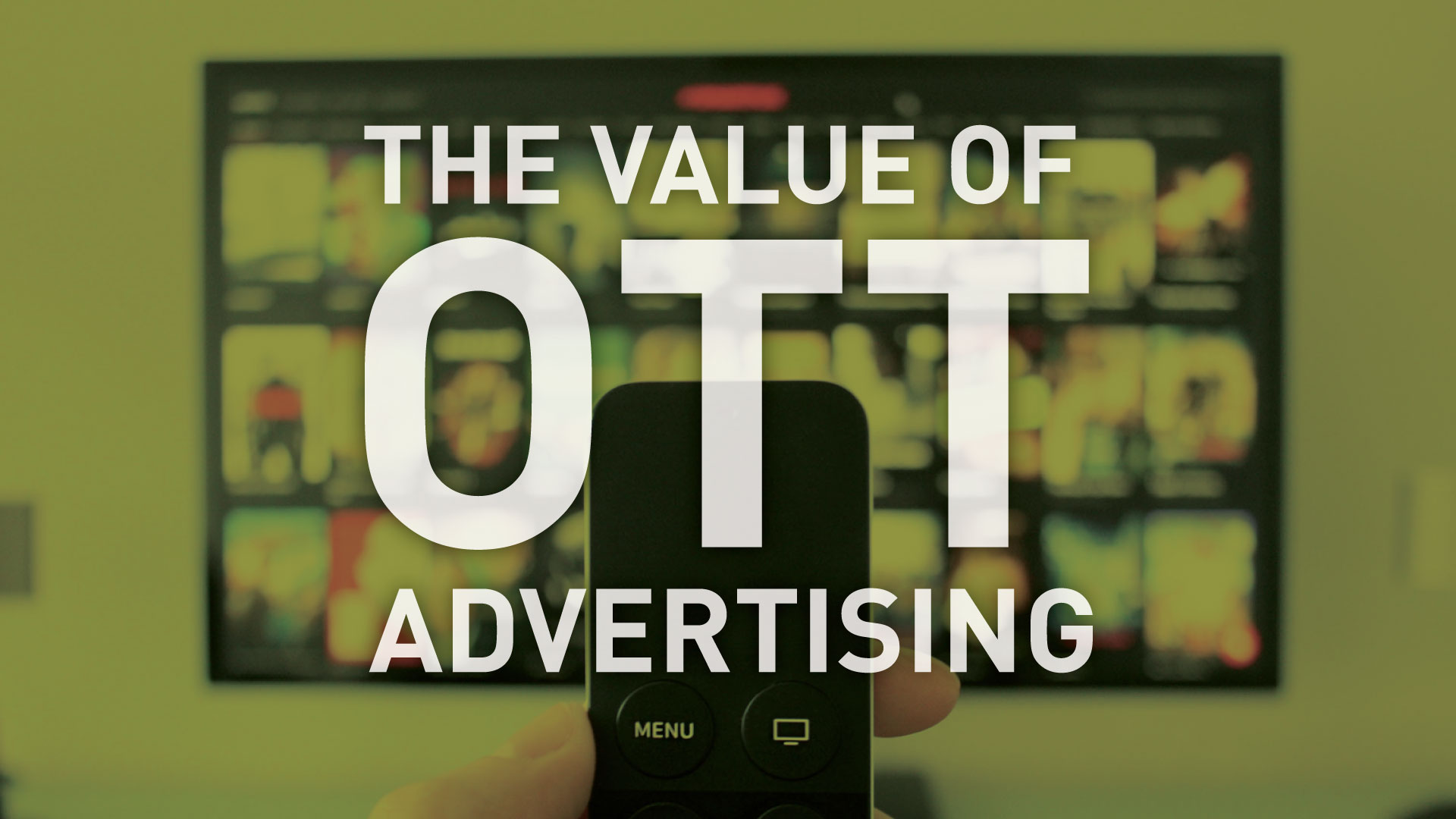OTT – The Most Talked About Form of Media
- Subscription video on demand (SVOD)
- Virtual multichannel video programming distributor (vMVPD)
- Free ad-supported streaming services (FASTS)
- Free network apps (FNAS)
- Transactional video on demand (TVOD)
Who is Using OTT
- Cord Nevers: Consumers who have never had paid cable TV and have only ever viewed their programs through apps on smart TVs and/or streaming sticks (like the Firestick or Roku).
- Cord Stackers: Consumers who have both cable television and also stream through video-on-demand platforms, smart tvs, sticks or mobile device apps with subscriptions to streaming programs like Hulu, Apple+, Sling, or YouTube.
- Cord Cutters: Consumers who once had cable television or satellite TV, but have canceled it and access their content exclusively through platforms like YouTube, Hulu, or the like.
In 2018, there were 90.3 million US households subscribed to PA (Cable/Satellite) TV, with that number dropping by almost 4 million this year to 86.5 million. This number is expected to drop even further in 2020 to 82.9 million households.
Homes that have cut the cord are likewise increasing at a similar rate. In 2018, the number of households without pay TV service was 36 million. That number has steadily increased to 40.2 million in 2019 and an estimated 44.3 million in 2020.
We also know the following:
Netflix has the biggest share of video streaming on TV among the services Nielsen measures, representing 29% of all streaming minutes viewed for the week of March 16, 2020.That’s followed by YouTube at 20%, Hulu at 10% and Amazon Prime Video at 9%.
Source: Spots N Dots April 3, 2020
While platforms like Hulu and YouTube are supported by advertising, Netflix and Amazon Prime are not, meaning marketers cannot reach audiences utilizing these platforms. In addition, even those supported by advertising, some paid models (like YouTube) include the removal of ad content for paid subscribers. The remaining streaming minutes where impressions can be purchased through an OTT provider is approximately 30%. The important issues to consider here are how many unique people you are able to reach, and how often.
The OTT Buy
OTT is digitally delivered and, therefore, it is available through several different media providers like your broadcast TV rep, able rep, or radio rep. When you engage the discussion, you are given pros and cons as to why their platform makes the most sense. As a marketing agency or in-house media buyer, it can be a challenge to choose the right OTT provider… one who will allow you to achieve your campaign goals and objectives. What is the difference in buying OTT direct or partnering with an agency? First, let’s talk about the differences between providers.
Cable companies are one of many providers in the OTT space. Broadcast TV media representatives also offer OTT, and some large media companies who have historically sold radio or print are also now selling OTT through direct publisher relationships and through open exchanges. Cable providers have carriage rights and licensing agreements with each of the networks available to the subscribers. Because they have all of these agreements, they have access to first party data and impression insertion through their Video On Demand (VOD) platforms. Also, per the Video Advertising Bureau Stats, 70% of OTT subscribers have a cable subscription. The cable subscriber has to authenticate (meaning sign-in) through their subscription. This gives the viewer access to networks through their VOD platform and, because of their paywall, other OTT providers have very limited access to these impressions. These alternate providers will tell you they can place ads behind paywalls, but that is only if they own the networks and in most cases the networks are very limited. OTT providers will also suggest that cable companies place the majority of their impressions within their subscriber base. This is a very common point made, and is frankly more of a myth. In addition, cable providers have agreements with ATT Uverse, Directv, and Dish Network.
The campaigns our agency has managed through a cable provider delivers approximately 30% of their total impressions into their subscriber base. The remaining 70% are placed in those households who are accessing streaming programming through an internet connection. Some cable providers are unable to geo-target by zip code, and this can be limiting.
As mentioned above, there are OTT providers who buy through publishers or what is called an “open exchange.” The open exchange is a bidding process that allows the buyer to purchase usually at a lower CPM and insert into similar content to other providers. Media reps may tell you they have the most access to the different exchanges, which sounds impressive. However, if they are buying on an open exchange, it means they are buying whatever inventory is leftover and usually it’s not premium content.
As a buyer, you also must be aware of fraudulent impression delivery. This can happen more frequently when buying through an open exchange so it is important to partner with a provider that utilizes anit-fraud software. There are three examples of fraud:
1) Misrepresentation: A fraudulent arbitrager may sell ads they claim are being shown to users in the US, but instead will show the ads overseas to take advantage of lower CPMs.
2) Device based fraud: A single connected device will show an implausibly high number of ads during a given time period, for example 50 ads in a single minute. (A human user could not possibly watch 50 different 30 second video ads in a minute.)
3) App-based fraud: This occurs when the same ad-supported OTT app shows an consistently high rate of activity around the clock.
Another factor to consider when determining the right partner is ad delivery. What percent of impressions do you think are delivered between 12am and 5am? It all depends on your target audience, but some providers will not even place in that space. Some will deliver dynamic content. Automotive dealerships are usual targets for dynamic delivery because their inventory changes daily. Some providers can access CRM data and deliver updated vehicle ads every day. Where are the impressions actually being delivered? Reporting dashboards play a large role and indicate where your investment is being placed.
Finally, budget is always a factor. It is important to understand the number of impressions available, and what the cost per impression ultimately is. Totals can range from $20 to $50 cost per thousand impressions and are based on many of the points previously discussed. Providers may also require a minimum spend to buy with them.
Reporting is the key to executing a successful streaming ad campaign. Because OTT ads are delivered to verified cable TV/internet subscribers and unique internet IP addresses, there is greater potential to target geographically, demographically and by lifestyle. In order to measure the success of the campaign, the reporting should provide the number of impressions delivered to the target geography, each individual network/platform and the individual programs on those networks and platforms. The audience composition can vary greatly from network to network, program to program just like traditional TV audiences, so it is important to target down to the show level for the best targeting. The number of unique users delivered within the targeted geographies and frequency of messages delivered to these users is critical information when using OTT. Some providers offer a LIVE reporting dashboard that can be accessed at any time to review the campaign details. These reports are usually more detailed than printed reports and offer the flexibility to monitor the campaign at any time.
You also have choices on management. You can place OTT yourself, or you can hire an agency to work on your behalf. Click here to review the benefits of partnering with an agency versus buying and managing direct.
Like all digitally-delivered media and advertising, OTT is growing and changing every day. Its popularity is gaining ground with all age demographics. It’s very cost effective and can deliver valuable impressions to your target audience. And gives you the chance to reach some consumers who may be unreachable through other means. Yes, there are many things to consider when determining if OTT should be added to your marketing mix, but it is a platform filled with opportunities that should definitely be considered.


